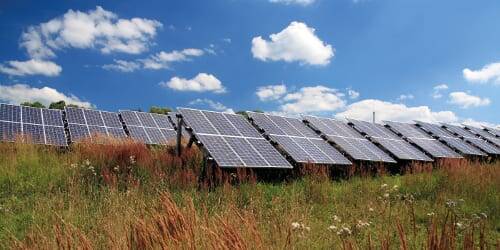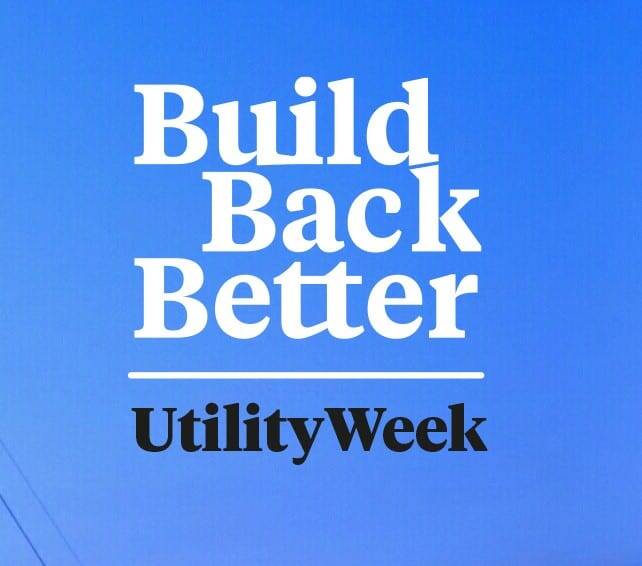You’ve reached your limit!
To continue enjoying Utility Week Innovate, brought to you in association with Utility Week Live or gain unlimited Utility Week site access choose the option that applies to you below:
Register to access Utility Week Innovate
- Get the latest insight on frontline business challenges
- Receive specialist sector newsletters to keep you informed
- Access our Utility Week Innovate content for free
- Join us in bringing collaborative innovation to life at Utility Week Live

The post Covid stimulus will create more demand for green energy – but what is really green – and what isn’t? Alan John and Deborah Harvey from Osborne Clarke explain

On 18 June European Union (EU) leaders met to  discuss the EU’s €750 billion economic recovery plan, which is tied to its 2050 climate-neutral target. In response, some of the biggest companies in the RE100, the global corporate initiative formed of large businesses committed to sourcing 100 percent renewable electricity, have pressed the European Commission to ensure that it introduces measures which help increase the uptake of renewable power by corporates. Suggestions have included the prioritisation of funding for electricity infrastructure, the provision of public credit support or risk sharing for ‘at risk’ projects and a process for an efficient roll out of renewable power purchase agreements (PPAs).
discuss the EU’s €750 billion economic recovery plan, which is tied to its 2050 climate-neutral target. In response, some of the biggest companies in the RE100, the global corporate initiative formed of large businesses committed to sourcing 100 percent renewable electricity, have pressed the European Commission to ensure that it introduces measures which help increase the uptake of renewable power by corporates. Suggestions have included the prioritisation of funding for electricity infrastructure, the provision of public credit support or risk sharing for ‘at risk’ projects and a process for an efficient roll out of renewable power purchase agreements (PPAs).
These developments illustrate both the additional stimulus of Covid-19 recovery plans for climate action and the growing appetite across commercial and industrial consumers globally to purchase electricity from ‘green’ sources (in many cases meaning exclusively from renewable sources, in others from more widely defined low carbon sources). This momentum is therefore encouraging from a decarbonisation perspective and presents a number of opportunities and challenges for purchasers and generators alike.
But when is ‘green’ energy really green and how do consumers know? And does it really matter?
Deep green – the private wire supply
An electricity supply from a renewable generation facility, such as a solar PV array or wind turbines located at or near the site of consumption, conveyed through a private wire to the consumer, is generally recognised as being the greenest source of electricity available to a commercial and industrial customer as the actual electrons generated are consumed by the customer.
However, as renewable sources are intermittent, a customer is unlikely to be able to rely on this approach as its sole source of power – a top up of electricity from the grid is likely also to be required. That said, commercial and industrial consumers are increasingly exploring the co-location of energy storage with both on-site and off-site generation to store renewable electricity for later consumption or export to grid. This thereby enables a greater proportion of the generated power to be consumed on site or to provide an additional revenue stream.
Whether a private wire supply is viable for a commercial and industrial customer depends primarily on the location of the site and whether it has existing renewable generation or the potential for this to be added. This will in turn be influenced by issues such as land and building ownership, planning and the availability of connection infrastructure, including a grid connection.
Assuming these issues are not early barriers, there is a range of approaches to private wire arrangements which can be explored, from commercial and industrial consumers self-funding renewable generation projects to partnering with developers on various cost allocation ratios, depending on the level of control required and commercial risk/reward to be shared. Private wire projects potentially enable a C&I user to source green electricity from a renewable asset under a bespoke PPA for a period beyond that normally available for grid PPAs (the term of private wire PPAs can be up to 20 years or more) and can also offer savings and upsides to both the generator and the commercial and industrial consumer due to the avoidance of certain network charges and industry levies.
Green – The sleeved PPA
There has been a surge in interest in sleeved PPAs in recent years, from corporates, generators and financiers alike. Unlike under a private wire arrangement, a sleeved PPA involves a generator exporting generated power to the grid, the generator and customer agreeing between themselves the associated power sale and purchase terms, and a licensed supplier enabling that arrangement via the grid (which attracts grid charges that do not apply to private wire supply). A sleeved PPA with a corporate customer boasting a good covenant strength can provide a generator and its financier with the long-term price security required to facilitate the development of a new renewable generation asset, thereby enabling the generation of new renewable electricity and providing what is often referred to as “additionality”.
A sleeved PPA entered into after the generating station has been financed and built may not provide the same level of additionality as one entered into at the outset. However, that later agreement can still offer a renewable generator an important revenue stream which in turn can facilitate the financing and deployment of further renewable assets. There are therefore differing and complex shades of green within this category.
Light green – renewable supply tariff
The role of low carbon electricity as a core product in the energy retail market has grown hugely over the past few years and there is now a real spectrum of approaches, products and participants in this space. Many electricity suppliers now offer ‘green’, ‘renewable’ or ‘low carbon’ electricity tariffs to both domestic and commercial and industrial customers as a matter of course and some go further, providing ‘100 percent renewable’ offerings. Whilst some of these arrangements may attract a tariff premium, for many commercial and industrial consumers these tariffs can be an appealing way of securing a low carbon supply without material additional cost or dedicating resource to the more complicated private wire or sleeved arrangements outlined above.
Some questions have been raised around certain of these tariffs and the extent to which the green badge accurately reflects the origin of the electricity being supplied. The evolution of the Renewable Energy Guarantees of Origin (REGO) market has enabled suppliers to source REGOs at low cost on a standalone basis for the purposes of fuel mix disclosure obligations, whilst purchasing a corresponding amount of electricity on the wholesale market to match consumer demand. Ascertaining the true source of purchased electricity in this context can be challenging for consumers.
Ofgem has recognised the need for transparency around green supply in its decarbonisation programme action plan, published in February, in which it noted that “It is critical that consumers can trust that tariffs marketed as green will in fact make the expected positive impact for the planet, for example by stimulating additional investment in renewable generation. We are aware of growing concerns about ‘greenwashing’, where the environmental impact of a particular tariff or supplier is overstated. We expect suppliers to be transparent about what constitutes a ‘green tariff’ and we will undertake work to ensure that consumers are not misled.”
Shades within shades
The increased corporate consciousness around the source of consumed electricity presents real opportunities and challenges as businesses look to demonstrate distinctive and authentic engagement with the decarbonisation agenda and, in many cases, achievement of voluntary climate change commitments within a declared timeframe. There are many shades of green across the available procurement options and subtle differences within the shades. These are likely to become increasingly important as decarbonisation targets and claims are subjected to increasing scrutiny.
Alan John is a partner in Osborne Clarke’s projects practice and heads the firm’s renewable energy group. alan.john@osborneclarke.com. Deborah Harvey is an associate director and co-head of energy innovation at Osborne Clarke. She specialises in energy sector transactions and agreements. deborah.harvey@osborneclarke.com
Please login or Register to leave a comment.